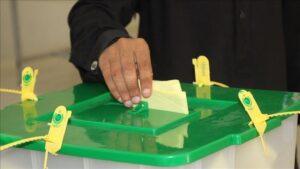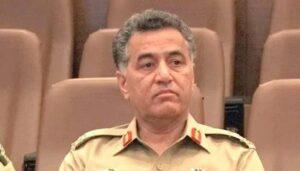The Prime Minister says Pakistan is a unique triple junction of economic corridors linking China, Central Asia and the Middle East.
Prime Minister Muhammad Shehbaz Sharif poses for a group photo with world leaders during the Regional Transport Ministers’ Conference in Islamabad on Friday, October 24, 2025. Photo: APP
Prime Minister Shehbaz Sharif has said that Pakistan stands as a “unique triple union” of economic corridors linking China, Central Asia and the broader Middle East, serving as a vital connector of markets and people while opening new avenues for trade and energy cooperation.
Addressing the concluding session of the two-day Regional Conference of Transport Ministers, themed “Regional Connectivity: Opportunities for the Region”, the Prime Minister underlined Pakistan’s central geographical and economic role in regional integration.
The event, organized by the Ministry of Communications, brought together transport ministers and delegates from 20 countries, along with representatives from the Asian Development Bank (ADB), the Economic Cooperation Organization (ECO) and the International Road Transport Union (IRTU).
“This would strengthen our common interest in peace and reinforce development efforts in the region,” Shehbaz said. “Let us sow the seeds of cooperation together so that we can reap the fruits of development and prosperity for our people, our region and beyond.”
Read more: Prime Minister urges Qatar to invest under SIFC and praises Doha’s role in Pakistan-Afghanistan ceasefire
Highlighting the importance of CPEC and other transnational rail and road initiatives, the Prime Minister said these connectivity projects would help create synergies between regional economies and usher in a new era of greater trade, economic and energy cooperation.
“For centuries, today’s Pakistan has prospered thanks to connectivity, from the ancient Silk Road to the current Belt and Road Initiative,” he noted. “Changing geopolitical dynamics and the increasing dominance of economic priorities have breathed new life into this ancient corridor, transforming it from a relic of the past to a strategic necessity for our future.”
Prime Minister Shehbaz said Pakistan’s geography, linking the warm waters of the Arabian Sea and the Persian Gulf, places it at the confluence of China, the Eurasian land bridge and the Middle East. He said the country’s long coastline made the ports of Gwadar and Karachi key transit points on the maritime Silk Road.
Praising the vision of his brother and former Prime Minister Nawaz Sharif, the Prime Minister said the signing of the China-Pakistan Economic Corridor had been a transformative step connecting the markets of China, Central Asia, South Asia and the Middle East.
Read also: SP among three martyrs of Hangu blasts as police kill two terrorists in operation
He said Pakistan is now entering an “exciting” new phase of CPEC 2.0 focused on promoting business-to-business partnerships, attracting Chinese investments and deepening mutual prosperity.
Additionally, the prime minister mentioned several ongoing railway projects, including the Trans-Afghan Railway and the Islamabad-Tehran-Istanbul corridor, as well as plans to improve air connectivity with Central Asian states under frameworks such as the TIR Convention.
He said connectivity “is not just about roads and railways”, and that Pakistan is also investing in digital infrastructure to prepare for the fourth industrial revolution. “We may not have black gold, but our youth, 60% of which are between 15 and 30 years old, are our greatest asset,” he remarked.
In his closing remarks, Minister of Communications Abdul Aleem Khan said participants had reaffirmed their commitment to strengthening connectivity as a path to shared prosperity. He said the conference emphasized creating new linkages, developing innovative financial mechanisms and fostering partnerships with international financial institutions.
Participants, he added, also called for liberal visa schemes, better road safety measures and stronger collaboration to achieve sustainable regional growth.



